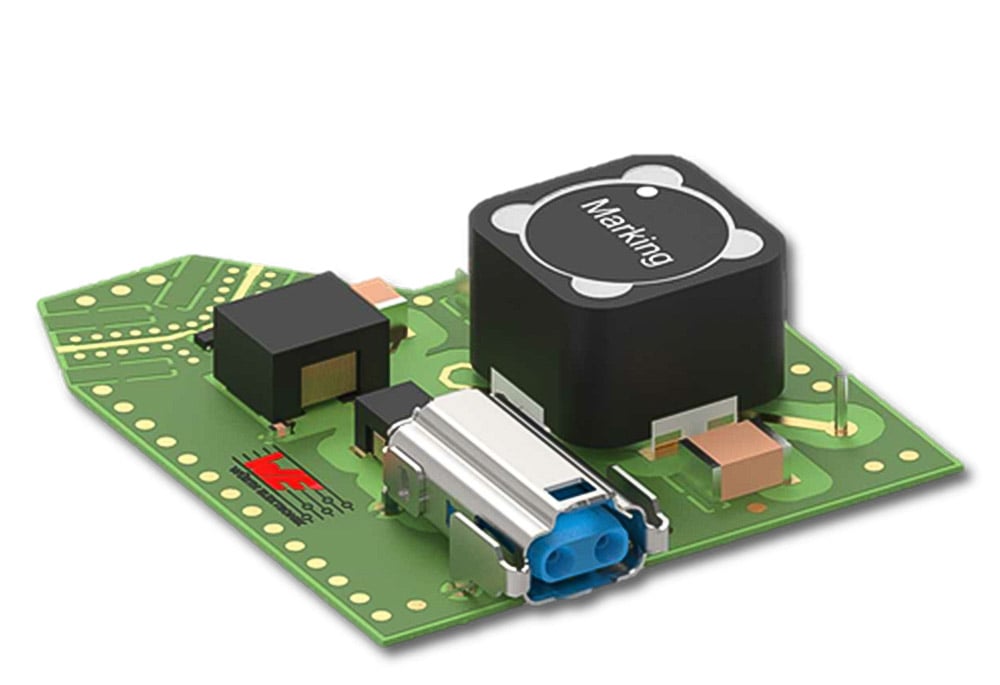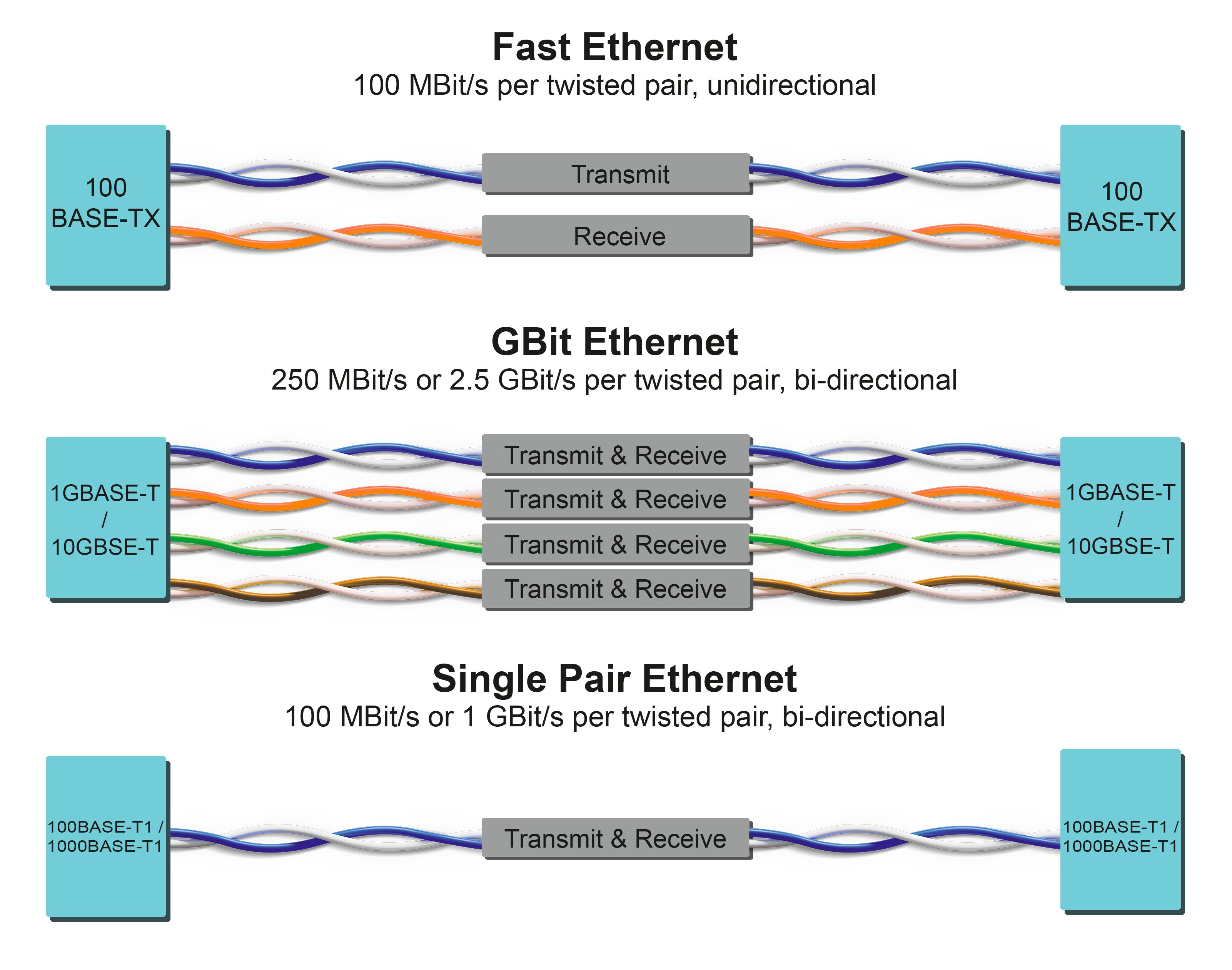Since Industrial Ethernet has become increasingly popular, we have increasingly heard claims about “from the sensor to the cloud”. These claims are typically made in connection with megatrends such as IIoT and I4.0. This refers to continuous TCP/IP-based communication based on Ethernet, which currently typically extends from cloud applications to the production distribution level.
Where there used to be a classic break in communications systems between Ethernet and BUS systems, modern components can now bring fast Ethernet (up to 10 Gbit/s) to the smallest application with just one twisted pair. In this way, SPE enables consistent use of the TCP/IP protocol for the first time. And this drives the development of new devices and application areas, especially sensor/actuator networks. The sensor becomes “intelligent” and part of the total network. This speeds up parameterization, initialization and programming. When using SPE – whether a simple status sensor or a modern vision system consisting of a high-resolution camera – the Internet of Things becomes a reality and the field level becomes smart.
So when and how does SPE approach the factory of the world – China?
“We shape new standards and discuss them with our Chinese partners, because communication is the way to go. We believe that China is a very large and important market, thanks to the industrial upgrading,” said Joachim Finke, head of global product management, network interface connectors, at HARTING. “Smart factories require the seamless connectivity between the IT and OT worlds. SPE will play a crucial and important role in this area. We have been preparing for this day for quite some time. Two (a pair) for all, and all for two.” As is known, China has already considered adding SPE as a new interface in some standards, such as the GDCT (Green Data Center Technology Committee) standard, PICMG (PCI Industrial Computer Manufacturers Group). Industrial Ethernet white paper increased SPE specifically for the function of PoDL.
In industrial environments, SPE will enable designers to quickly and easily connect sensors, cameras, actuators and field devices.
 SPE's compact, lightweight design reduces cabling costs and bulk in industrial applications.
SPE's compact, lightweight design reduces cabling costs and bulk in industrial applications.
It will also integrate time-sensitive networking capabilities into systems, increase the determinism of OT networks, reduce the amount of cabling required, and make facility construction and maintenance easier and more cost-effective. SPE connectors can also provide these benefits for robotics, machinery and vehicle applications, including rail systems.
Operationally, SPE makes the work of plant technicians easier, installation is easier compared to four-pair Ethernet and allows a noticeable reduction in space and weight. And by requiring fewer cable connections in the field than with two- or four-pairs, cable connection errors can be significantly reduced. In some special cases, the installer or operator may require less time to detect a cable termination fault.
 MPE VS. SPE' (MPE = Multi Pair Ethernet)
MPE VS. SPE' (MPE = Multi Pair Ethernet)
Apart from the more compact dimensions, users benefit from lower assembly costs, less space required and less weight. In addition, the SPE cable has a smaller bending radius and a lower heat load and smoke development, while the reduced use of copper is good for the environment.
Single-Pair Ethernet For the most part, it will not replace conventional two- or four-pair Ethernet, which continues to enable even higher speeds – well into the Terabit range – and other performance improvements. Rather, SPE's true calling is to serve where its speeds, smaller size, lighter weight and lower price make it the practical choice to meet new IIoT demands. This will continue the astonishing growth of Ethernet in the industry. In 2014, fieldbus accounted for 71 % of all new nodes installed worldwide, while Industrial Ethernet accounted for 29 %. By 2021, this had largely reversed with 65 % and fieldbus has dropped to 28 %, as shown below.
Two (a pair) for all has become a reality.
The SPE ecosystem is predestined for this. The SPE ecosystem has been an open-minded, innovative, standardized and living alliance from the beginning. In this alliance there are no competitors, no soldiers and not even companies – but only friends.
Read more about the Single Pair Ethernet – Industrial Partner network here